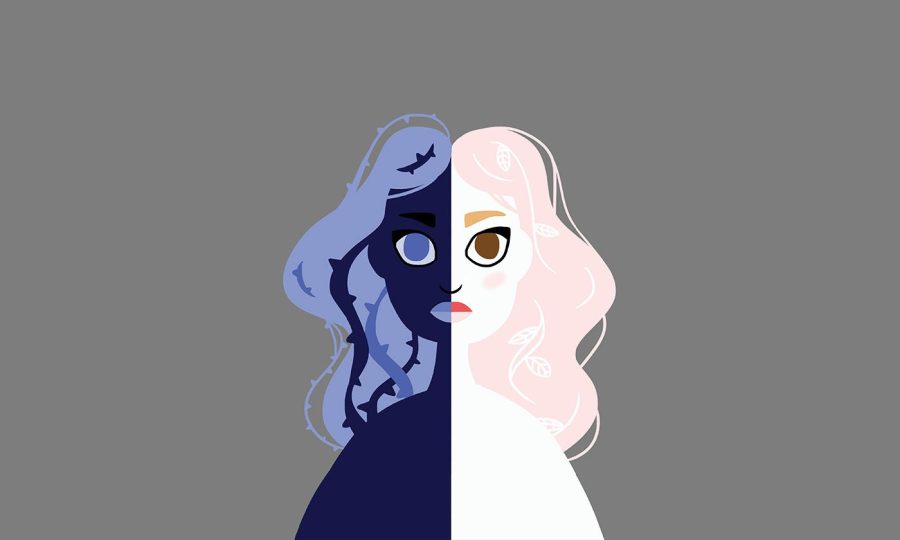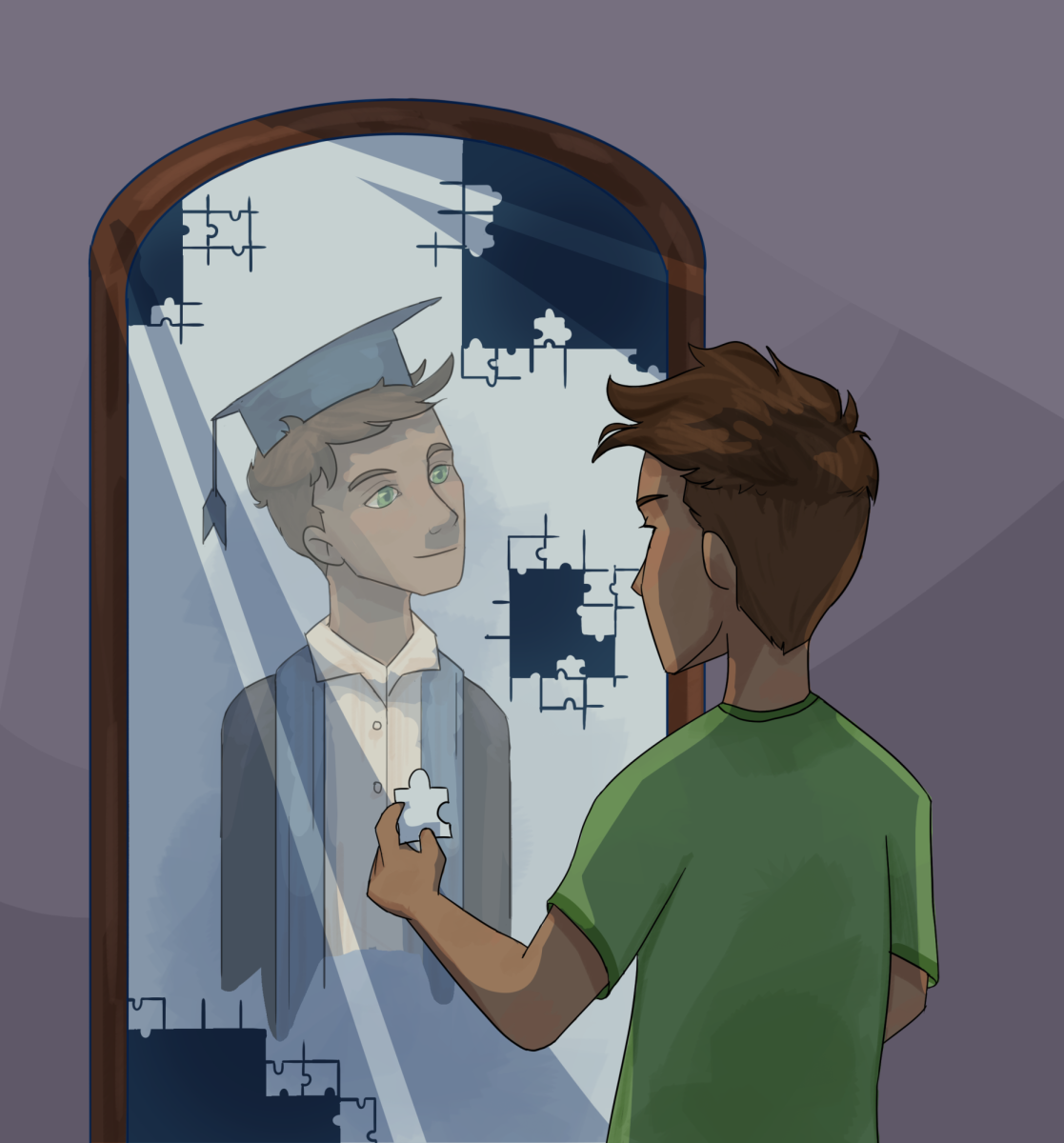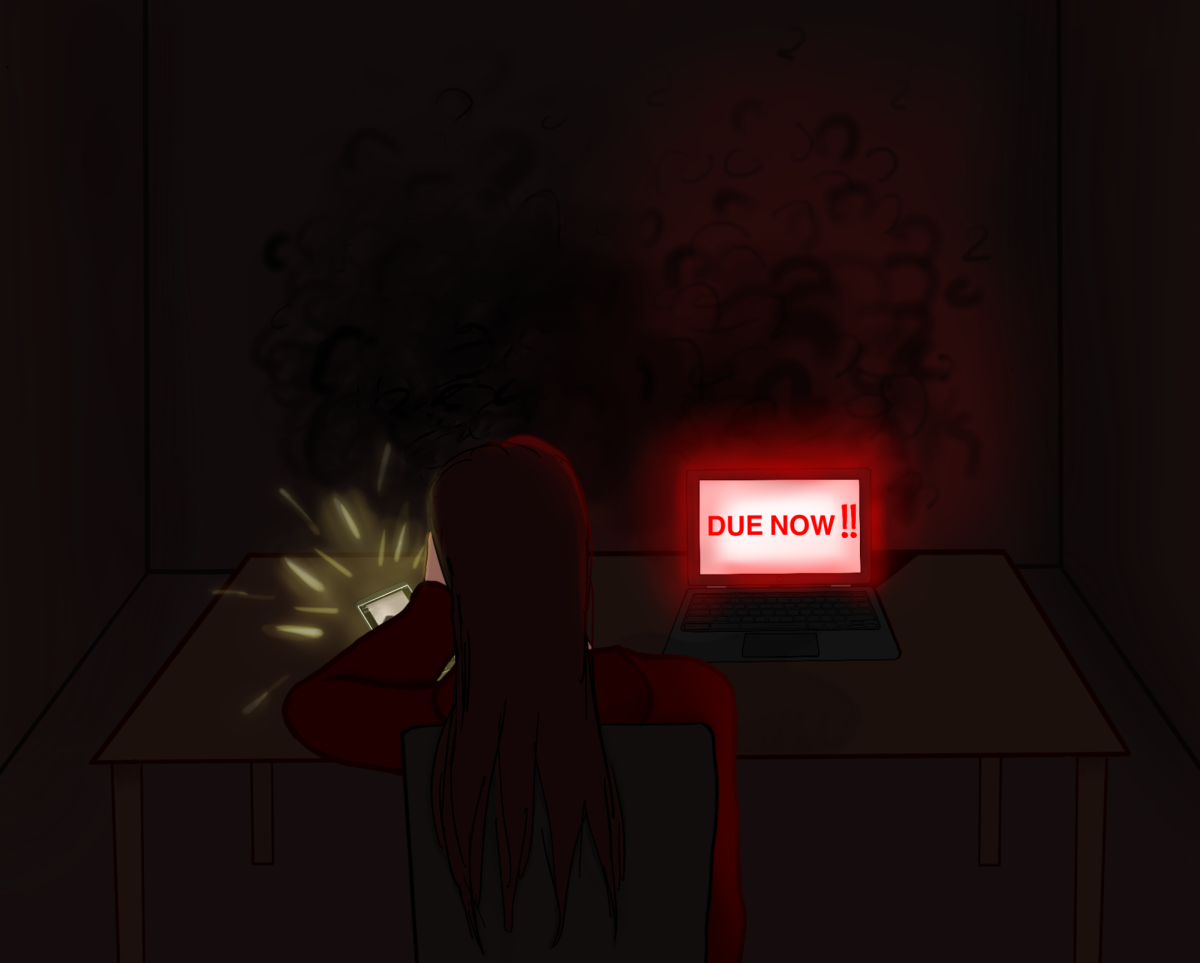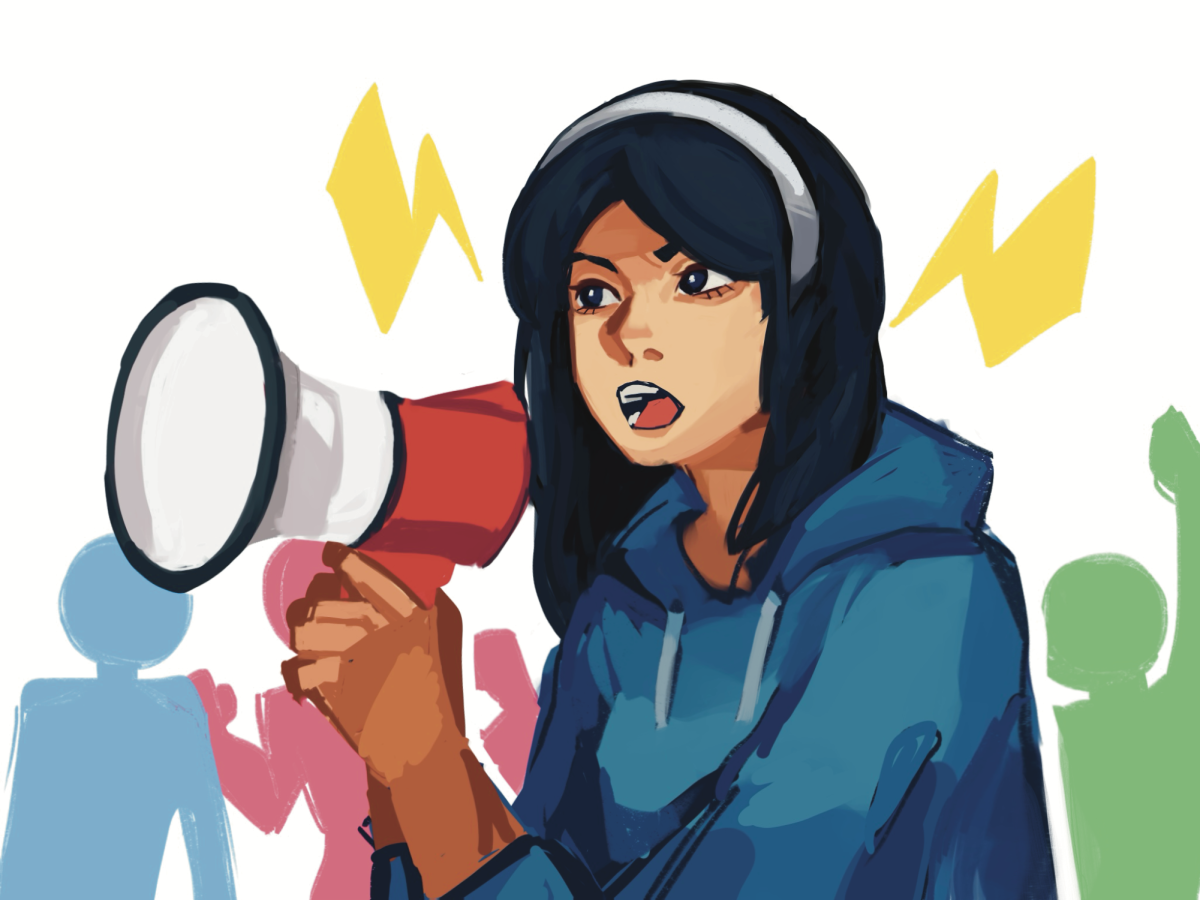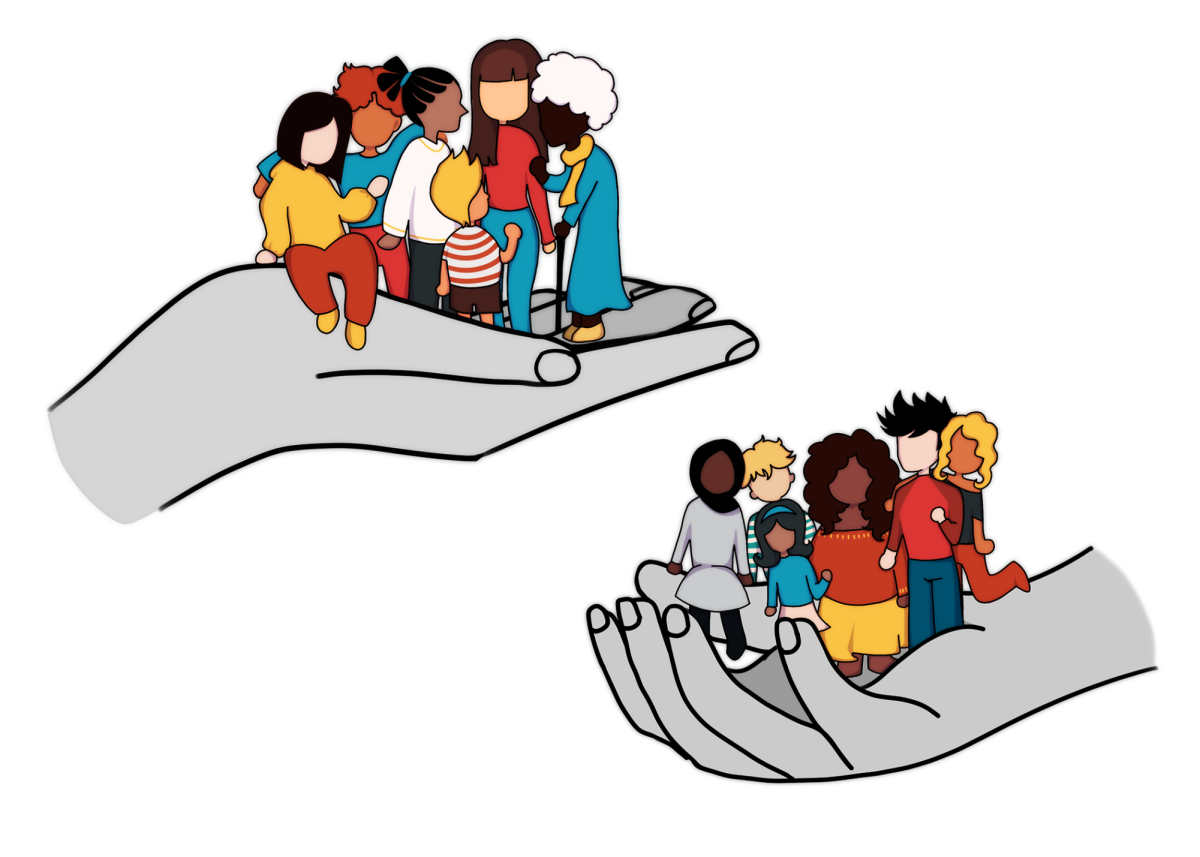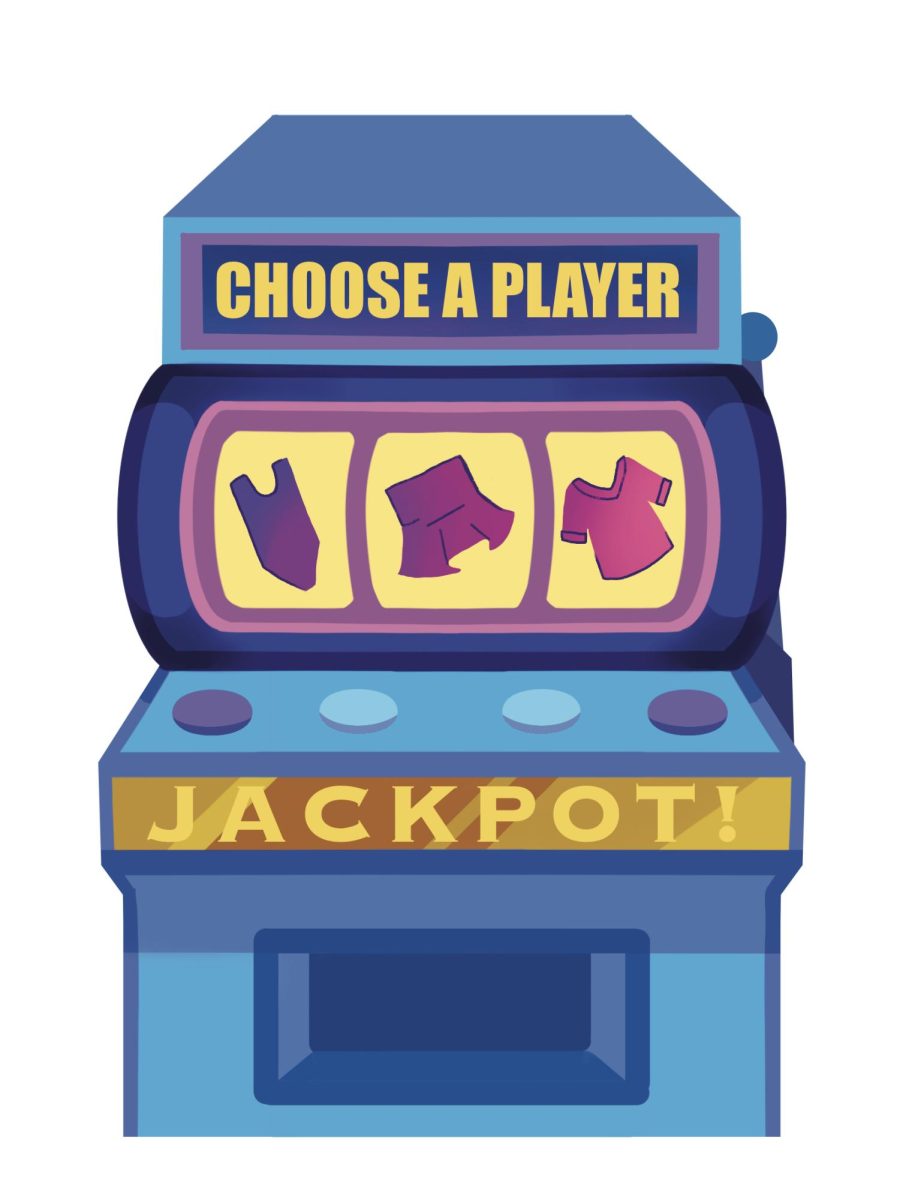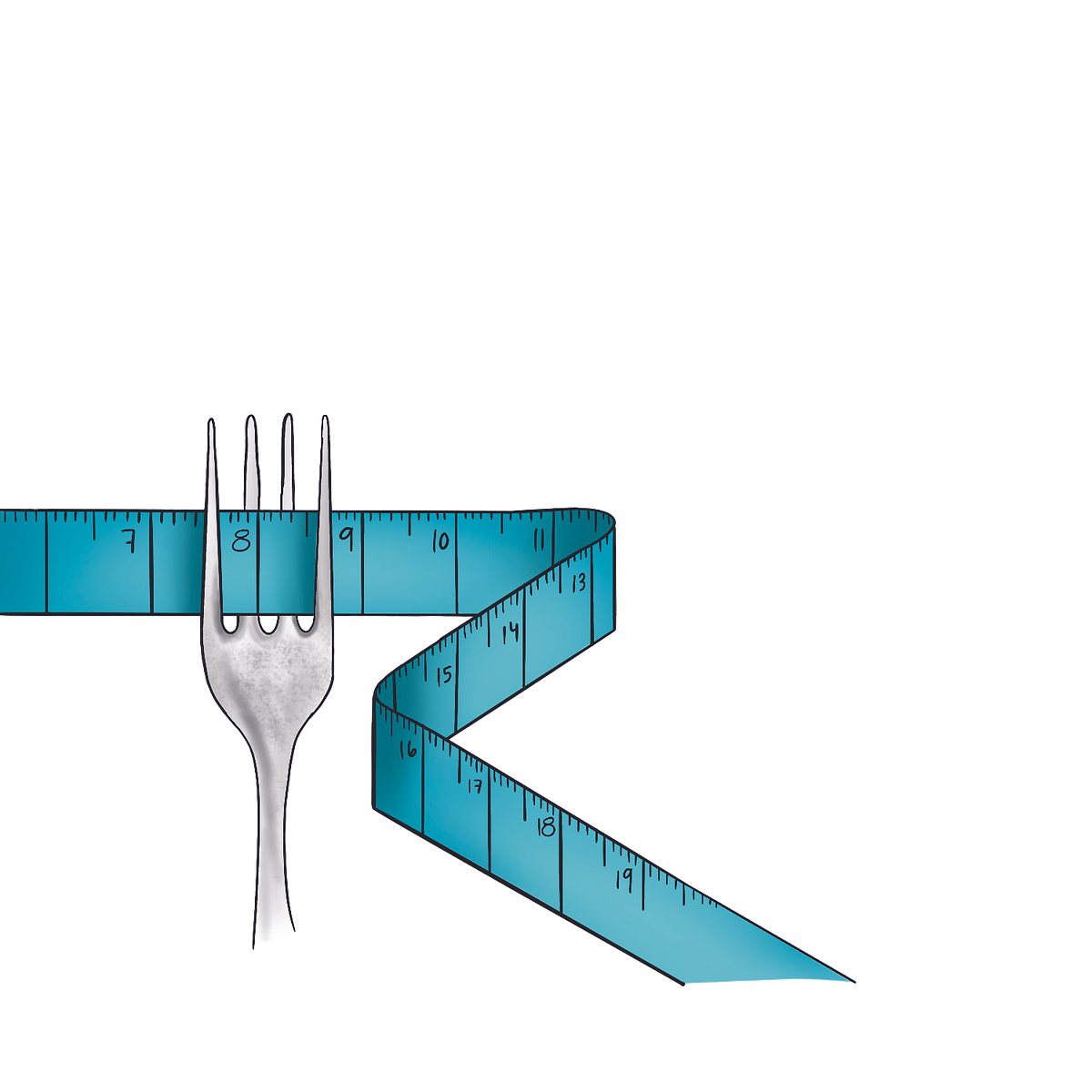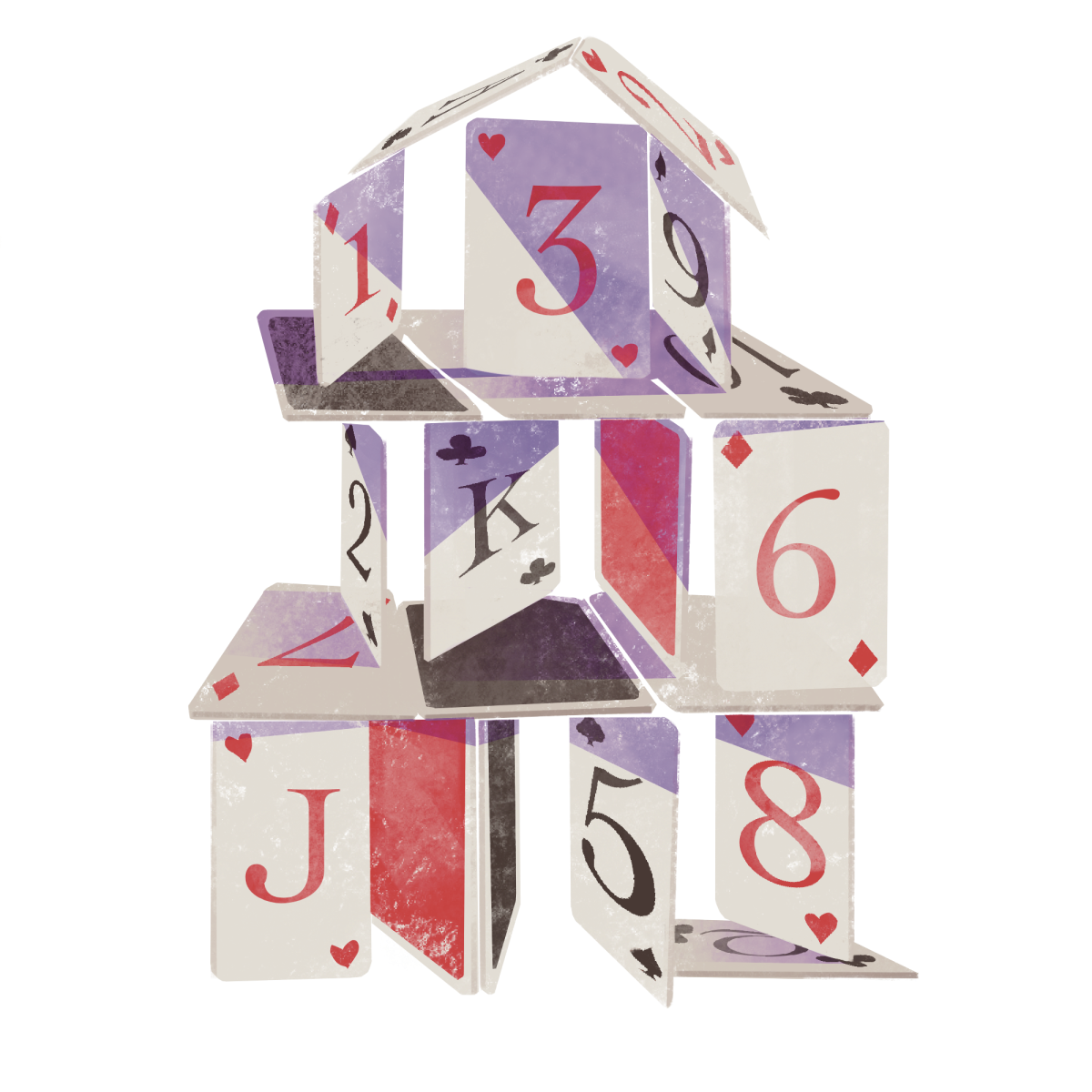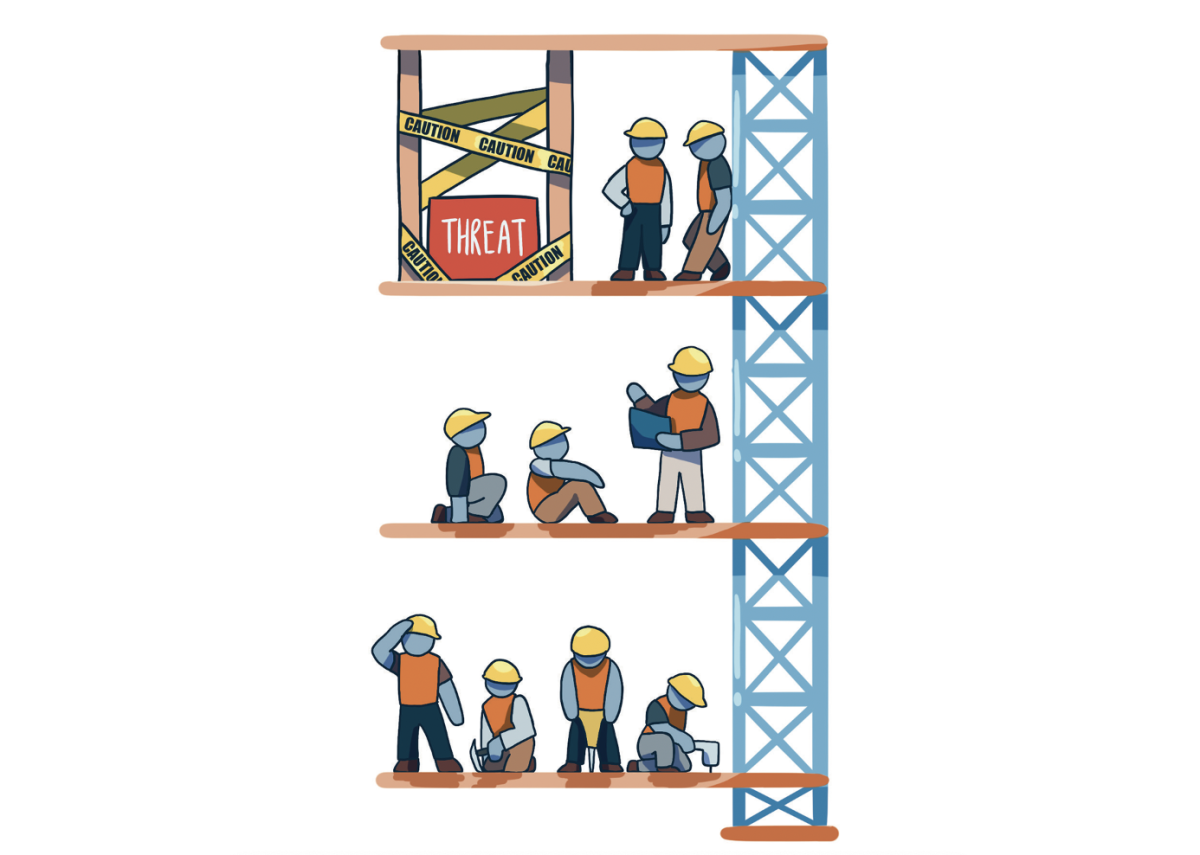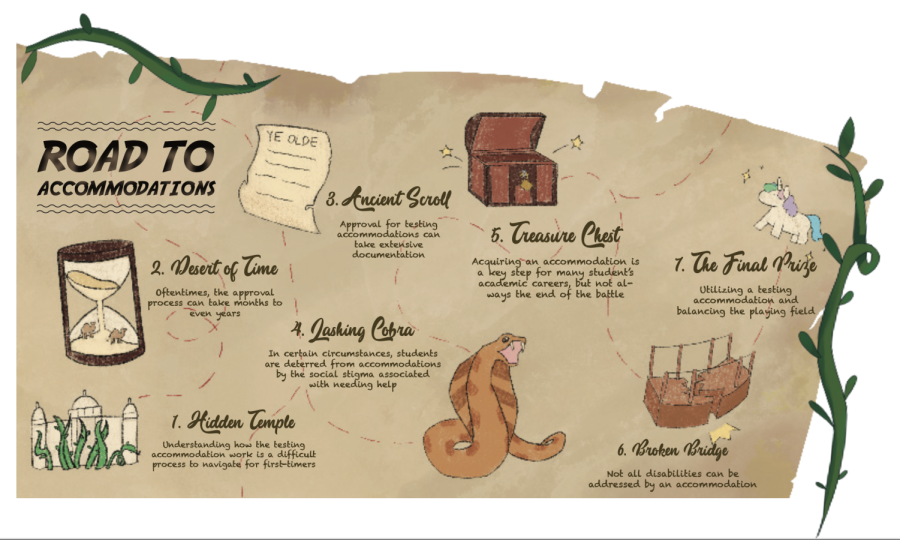Due to the sensitive nature of the topic, The Campanile changed the names of student sources in order to preserve their anonymity.
[divider]Hidden Battles[/divider]
When a person has a broken leg, it can be seen from a mile away. The clunky crutches and neon cast are a magnet for attention and compassion. Friends will ask what happened, listen to the story and shower the individual with sympathy and well-wishes. A classmate will offer to carry his or her backpack, and a stranger will hold the door open.
However, when a person faces a non-physical affliction, the support of those around them may be even more crucial for recovery than with a physical injury, yet it seems to be lacking. The mental disorders some students grapple with each day can cause struggles just as painful as broken bones, but they are invisible.
Generally, stigmas surrounding mental health result in an insufficient understanding of these disorders. This can result in the casual and ignorant use of the disorders as personality quirks.
Claire, a sophomore who has been diagnosed with OCD in addition to other mental disorders, recounted a story about a classmate interrupting class to adjust the board while jokingly claiming to have OCD. Claire expressed her anger at the callous use of the term.
“It’s not something that should be part of any comedian’s joke book. There should be nothing entertaining about it. And it shouldn’t alienate people, either. Normal people have disorders, and it doesn’t make them any less than someone who doesn’t.”
Claire
People need to be mindful of the way their words impact others.
“[We should] be more cognizant about the words we throw around, not using those terms casually definitely is more sensitive,” said Melinda Mattes, an AP Psychology teacher at Paly.
It is imperative that we recognize that in addition to the more commonly discussed mental disorders such as depression and anxiety, there are other serious mental conditions that are prevalent in the community. These conditions cause some students at Paly to face silent battles every day.
[divider]ADHD[/divider]
While many students struggle to pay attention during a long lecture or a test, those with attention-deficit/hyperactivity disorder, or ADHD, experience that struggle on an entirely different level.
The effects of ADHD vary from person to person, and can range from mild to severe. There are three subtypes of ADHD: inattentive type, hyperactive-impulsive type or, most commonly, a combination of the two, according to AP Psychology teacher Christopher Farina.
“[The inattentive type is] the inability to maintain focus on a single thing for an extended period of time. For an individual that would be diagnosed with ADHD, it would be severe enough that it’s impairing their ability to do normal work.”
Christopher Farina
Junior Sarah has struggled with staying focused since she was little, but was not diagnosed with inattentive ADHD until she was 14 years old.
“It’s really hard to focus and do work and listen to teachers when they speak,” Sarah said. “Sometimes when people talk to me, it just goes through my head and I try really, really hard to focus but I can’t process it. [This happens] when I read, too.”
People with hyperactive-impulsive type ADHD may have trouble sitting still or concentrating on one task for an extended period of time. These individuals have a tendency to want to change topics or activities frequently, and often feel restless.
“They’re not dumb, they’re not necessarily oppositional; it’s not that they don’t like school,” said Mattes. “It’s that it’s hard, and it takes this extra level of effort.”
ADHD is often perceived as an individual simply not trying enough, when in reality, it is not a matter of choice or will power.
“I think when I tell people that [I have ADHD], then sometimes they think that I’m lying, or that I’m overreacting. It’s not fake. It’s science. Mental health is science.”
Sarah
ADHD usually appears in childhood, which was the case with sophomore Matthew. He was diagnosed with a combination type of ADHD when he was in preschool.
His teachers first recognized symptoms of ADHD in Matthew when he could never fall asleep during naptime and was always running around. They would give him medication to calm him down, but this proved to be ineffective. Eventually, the school brought in a psychiatrist for a diagnosis.
“[The psychiatrist] would ask me questions and [I] would always be bouncing around to different things,” Matthew said.
Even today, Matthew usually needs several prompts to stay on task or some kind of motivation in order to help him fully complete an assignment. ADHD has affected his learning as well as his ability to maintain friendships, according to Matthew. It can be difficult to maintain focus on a conversation on a single topic.
“I feel like my friends think I’m crazy sometimes because I can’t stay on subject with them. They want to do one thing, I’ll do it with them, but then in maybe 30 minutes to an hour later I’ll want to switch to a different activity.”
Matthew
According to Mattes, this difficulty to stay focused for a long period of time can have a larger impact in high school, where the block schedule requires students to be in a single class for up to 90 minutes.
“Halfway through, or maybe a quarter through [the block period], I start not wanting to do it, so I’ll start doing drawings on a paper or something once I lose interest,” Matthew said.
According to Matthew, it is important to dispel common misconceptions of ADHD and recognize that although those with ADHD think differently than most people, the disorder does not cause the individual to be unnatural.
“Things that we do may not be natural to other people, like the way we do things, but it’s natural to us because that’s the way we’ve grown up,” Matthew said.
[divider]OCD[/divider]
A neatly arranged desk, keyboard and papers all set at right angles. A perfectly symmetrical pile of folded clothing. A pristine room, not a speck of dust out of place. These are all common associations with obsessive compulsive disorder (OCD). However, these misconceptions fail to grasp the reality of the condition.
According to Mattes, OCD is a combination of obsessions, thoughts that invade the consciousness and cannot be ignored, and compulsions, which the brain designs to relieve obsessions.
Claire, who was diagnosed with OCD at the age of 6, has an obsession with numbers — while she feels at peace with seven, nine and three, she cannot stand four and six. For example, when there were six cups in the cupboard, she had to break one of them so that there would be an odd number of cups.
“[My obsession] has to do with religion, because seven [and] 12 [are] holy numbers. Three is [also] a holy number, but six is the number of the devil: 666. I was always told stories because my father is really religious … I was just terrified of six in general. I would think the devil’s coming to get me if something landed on six.”
Claire
Though Claire’s obsession has the clear reasoning of religion behind it, obsessions don’t always have such a straightforward explanation.
Rachel’s obsession with a need to complete certain tasks with her right hand or foot started at her therapist’s office. There was a staircase that had one creaky stair that Rachel always needed to step over, and this resulted in her developing the need to finish a staircase on her right foot.
The obsession later expanded to her need to balance out her left side with her right side, which was demonstrated in her piano practice. When she made a mistake with her left hand a number of times, she would always need to stop and make the same mistake with her right hand.
“My teacher would yell at me: she was like, ‘no, why would you do that? You just messed up the song, twice.’ It’s another thing that takes up your mind, because you should be able to walk simply down the stairs, but for me, if I did it wrong, my mind would want me to go up and do it again.”
Rachel
Senior Katherine has an obsession requiring her to perfect her penmanship and neatness of her paper.
“My mom does remember in kindergarten even I erased my name so many times that the paper ripped,” Katherine said.
With Claire, Rachel and Katherine, ignoring the obsessions results in an uncontrollably anxious and stressed feeling.
“If I got upset because of something that seemed off or [that] I didn’t do right, I would get upset, but not in a way that I could control. It would give me a lot of anxiety. … I would get anxious to the point where I would sometimes feel trapped.”
Rachel
Even though these obsessions and fears may seem unrealistic to most people, for Claire, Katherine and Rachel, these thoughts plague them daily. The only way they can feel reassured is if they fulfill their compulsions, according to Mattes.
“It is serious, and people who suffer from OCD generally know that [the compulsions are] unrealistic, but they can’t not do it,” Mattes said.
OCD is treatable by therapy, according to Elizabeth Spector, the Mental Health and Wellness Coordinator at Paly. According to Katherine, one way her therapist helps her combat her OCD is by having her write in pen, making it impossible for her to erase and rewrite.
[divider]PTSD[/divider]
While many people look forward to fireworks on the Fourth of July, for war veterans, the explosive sounds from these loud and colorful displays can cause memories of the battlefield to resurface.
“[With post-traumatic stress disorder (PTSD)], a person suffers a traumatic experience, then they have these stressful or anxiety-producing episodes afterwards,” Farina said.
Claire went through a traumatic event when she was 7 or 8 years old. With her PTSD, she often relives the experience through nightmares.
“I have nightmares every day. They’re usually tied [to the traumatic event], but they aren’t about what happened.”
Claire
Claire can also be thrown into the memory through triggers, which for her, mostly involve being physically touched. According to Spector, triggers can be anything that remind the individual of his or her past experience.
“Just being tickled and poked in general, especially in the thigh, [is a trigger],” Claire said. “It rarely happens, but it’s just a no. Usually I can get ahold of it, but sometimes when I’m not paying attention, and someone just comes up to me and does that, I just get lost in this state of remembering and I’ll start crying.”
Senior Ella has secondhand experience with PTSD. Ella’s mother was diagnosed with PTSD from being abused as a child.
“[My mom’s] dad was abusive—physically, verbally, emotionally—he was just all around not a good person,” Ella said. “We can’t really blame him, because he also had a hard upbringing; he was abused a lot, too.”
According to Ella, one of her mother’s main triggers would be getting into arguments with Ella’s father. During these shouting matches, she would be reminded of her chaotic childhood, which would send her into a frenzy.
“When they were fighting, she would just kind of insanely start screaming at my dad, or she would just kind of really spiral down and get really, really depressed,” Ella said.
According to Ella, she sometimes struggled with how to deal with balancing her mother’s disorder and her own anxiety.
“It was kind of this point where I was just trying to bar myself away from my parents, which is really hard because I love my parents,” Ella said. “But it was hard to be constantly hearing her talk about [her PTSD].”
Ultimately, someone who has a loved one with a mental disorder has to accept that there is only so much they can do, according to Mattes.
“All you can do, as a friend or family member, is be as supportive as possible, but [acknowledge] that you can’t fix people, which is really hard,” Mattes said.
[divider]Bipolar Disorder[/divider]
Many people believe that “bipolar” is interchangeable with simply being moody, but in reality, it is a much more serious and acute condition.
“[Bipolar disorder is] a disorder of one’s mood, where an individual will experience periods of mania, and opposite that, periods of depression,” Farina said.
Claire was diagnosed with bipolar disorder when she was 10 and describes bipolar disorder as something that has an immense effect on one’s emotions all the time.
“I wasn’t scared, I was terrified. I wasn’t angry, I was enraged. I was so emotionally exhausted; in general, it was really draining to be ruled over your emotions, and not know why you felt this way, and not know why things that are so trivial and small could knock your world out of balance.”
Claire
During a period of mania, one feels on top of the world. With an abundance of energy and thrilling new ideas flashing through the mind, it can be difficult to sleep or even manage to control oneself, according to Claire.
“It’s kind of like things are possible that wouldn’t normally be possible, and it can be scary sometimes, but it can also be extremely empowering, and it can make you act like an idiot,” Claire said. “You can do things you regret, and that’s the [worst] part of it, because you end up causing a lot of trouble, for yourself or for others, in more ways than one. … There are so many things you can ruin and you’re just not aware of that.”
The other extreme emotional state is depression. In a depressive state, one lacks a sense of purpose and drive, and even the simplest tasks can seem overwhelming.
“It’s horrible,” Claire said. “You completely lose motivation for anything. For me, I get a lot more angry easily and I just don’t want to do anything. … It kind of makes the world black and white and bland.”
Spector emphasizes that when a friend is suffering from depression, it is crucial to ensure that they are aware of the many resources available for them, including but not limited to their friends, family and school mental health resources such as the Wellness Center and counseling.
[divider]Eating Disorders[/divider]
At an average birthday party, the kids will flock to the cake, their eyes glowing with excitement. But for someone who suffers from an eating disorder, the same situation brings about very different emotions.
“Eating disorders are mostly focused around individuals that ultimately are not keeping enough food in their body,” Farina said.
The three eating disorders are anorexia, bulimia and binge eating. Anorexia is characterized by restricting food intake, and can go together with over-exercising, according to Farina. With bulimia, an individual will binge eat and then purge. Lastly, binge eating disorder will cause an individual to excessively overeat.
Junior Rachel has struggled with anorexia from a young age. For her, it all began with a simple comment from a friend in fourth grade about how skinny Rachel was. Though it was not said out of malice, it completely altered the way Rachel viewed her body.
“[The comment] changed the whole way I thought about my body because I saw it as more than just my body, I saw it as something people looked at as part of me. Would people like me if I wasn’t the same body type?”
Rachel
She began to restrict her eating, and was convinced that she was becoming more and more healthy by eating less and not allowing herself to eat certain foods. She began throwing away food and it eventually escalated to the point where Rachel was starving herself.
It was difficult for her to realize that she had developed an eating disorder. She felt as though she was making healthy choices, and got frustrated when others tried to get her help.
“It felt like [my friends] were trying to ruin something I had worked for, instead of trying to help me,” Rachel said.
Eating disorders can often become a slippery slope, according to Mattes. Experiencing a positive feeling following changes in one’s body after restricting their diet can be a false reassurance that their eating pattern is healthy, as Rachel experienced.
“An individual that suffers from an eating disorder sees a very different reality than other people do,” Mattes said.
For Rachel, her whole perspective on food, health and body type changed.
“Most people with anorexia have body dysmorphia, and that’s where you look into the mirror and you physically don’t see the same thing that other people see,” Rachel said. “It’s like going to a house of mirrors.”
The mindset that comes along with an eating disorder results in never-ending dissatisfaction, according to Rachel.
“With people with eating disorders, they think, ‘Once I finally get to [this goal], I’ll finally be happy with myself,’ but it’s never enough. No matter how much weight you lose, or how much food you leave on your plate, you’ll always have something that you feel insecure about. You can never reach that point of total self-love while you still have that mindset. You can’t love yourself if all you’re trying to do is change yourself.”
Rachel
According to Rachel, the process of changing this mindset can begin with telling one trusted individual.
“If you notice that you are … suffering from symptoms but you don’t want help, the best thing you can do is just tell one person, who you know cares about you, and will help you get help,” Rachel said. “Because sometimes the first step is just admitting it to yourself.”
[divider]Call to Action[/divider]
As Rachel experienced, disorders can get better with the help and support of those around. It is crucial that every member of society stretches out a helping hand to those going through these invisible battles.
“Psychological disorders are largely invisible, and they get interpreted as just being your personality and who you are.”
Melinda Mattes
After recognizing that an individual needs to get help, friends and family can provide support in a way that suits the individual’s needs.
“All of these disorders are treatable, and each one is different, and each person is different, so treatment will look different for everyone,” Spector said.
With a broken leg, the process is straightforward: an x-ray, a cast and time. Though treatment for mental disorders is far less clear, both require the support of others. It is every individual’s duty to acknowledge mental disorders as equally important, and be aware of the silent battles those around may be fighting.

